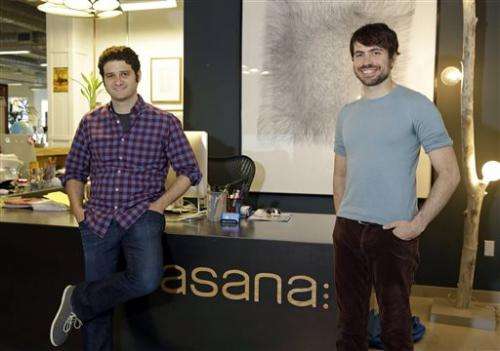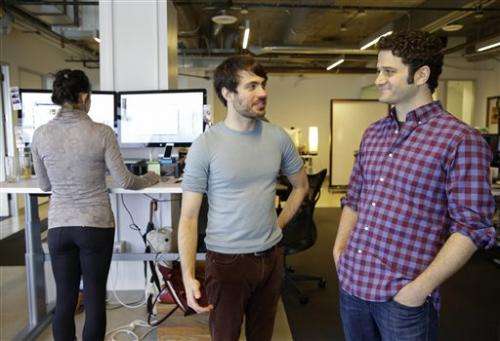Escaping email: Inspired vision or hallucination?

(AP)—Dustin Moskovitz is plotting an escape from email.
The 30-year-old entrepreneur has learned a lot about communication since he teamed up with his college roommate Mark Zuckerberg to create Facebook a decade ago, and this wisdom is fueling an audacious attempt to change the way people connect at work, where the incessant drumbeat of email has become an excruciating annoyance.
Moskovitz is trying to turn that chronic headache into an afterthought with Asana, a San Francisco startup he runs with former Facebook and Google product manager, Justin Rosenstein.
Asana peddles software that combines the elements of a communal notebook, social network, instant messaging application and online calendar to enable teams of employees to share information and not rely on email.
"We are trying to make all the soul-sucking work that comes with email go away," Rosenstein says. "This came out of a deep, heartfelt pain that Dustin and I were experiencing, along with just about everyone around us."
The inconvenience keeps mounting in the corporate world, which remains an email haven. This year, each worker using a business email account will send and receive a daily average of 121 mail messages, a 15 percent increase from 105 per day in 2011, according to The Radicati Group, which tracks email use.

In contrast, consumers have been weaning themselves from electronic inboxes and increasingly turning to digital alternatives such as social media and mobile messaging.
More email translates to less productivity as workers spend time weeding their inboxes. Vital pieces of business information are sometimes corralled in an inbox instead of in a database that can be searched by anyone working on the same project.
If companies set up communications channels that work more like social networks, the amount of time workers could devote to other things would increase by about 8 percent each week, according to the McKinsey Global Institute. Another 6 percent of the workweek would be freed up if the shift away from email could unlock more of the so-called "dark matter" hidden in individual inboxes, McKinsey estimates.
Asana is trying to solve these problems. Its bare-bones system, free to use for teams of up to 15 workers, is set up so information can be seen by anyone authorized by the company. Asana hopes to make money by selling subscriptions to more sophisticated versions of its software that can accommodate larger groups of workers.
Moskovitz began working on what became an early prototype for Asana while he was still at Facebook in 2007. He had become frustrated with email's shortcomings and wanted a better alternative.
Leaving Facebook in 2008, Moskovitz remains a major shareholder for the company, with stock worth about $7 billion, affording him the luxury to gamble on a startup that may be fighting a Sisyphean battle.
"I am not sure what anyone thinks they will be accomplishing by getting rid of email," say Sara Radicati, editor of the Radicati Group. "If we didn't have email, people would be spending all their time on the phone and other channels of communication. Is that really any better?"
While the Radicati Group foresees consumer email use waning in the next four years, the firm predicts the volume of business email will rise another 16 percent by 2018 to an average of 140 daily emails sent and received by each user.
One Asana employee, Emily Kramer, wanted to prove it's possible to survive without email so she avoided her accounts in April. It was the longest stretch that the 30-year-old had gone without checking email since she opened an account in the sixth grade.
Kramer found herself dealing with lengthier mobile messages that read like email.
"A co-worker had told me, 'I think it would be easier to go without oxygen than email," Kramer says. "I definitely don't think that's true any longer."
© 2014 The Associated Press. All rights reserved.


















